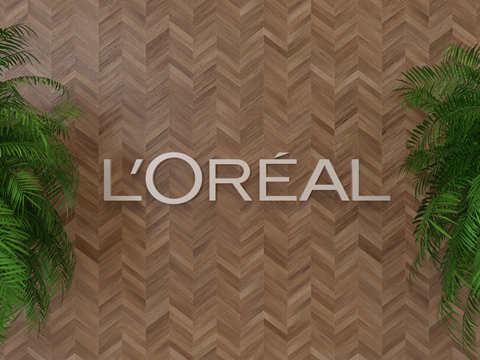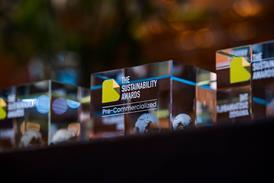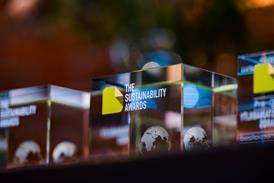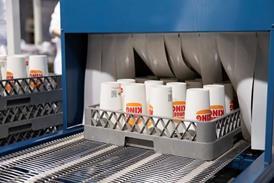
L’Oréal Groupe has failed to meet several of its sustainability targets for 2025, missing its 100% recyclable, reusable, refillable, or compostable plastic packaging goal by 51%. We take a deeper dive into its packaging progress so far and the feasibility of its ambitions for 2030.
Falling short
Back in 2020, L’Oréal launched its L’Oréal For the Future programme with its sights set on addressing its impacts across the value chain, starting with the research for its product ingredients and ranging to their responsible handling at end-of-life.
By 2025, it sought to ensure that 100% of its plastic packaging would be reusable, refillable, recyclable, or compostable. 50% of the plastic used to manufacture packaging was expected to come from recycled or biobased sources.
Its 2024 Universal Registration Document states that L’Oréal Groupe generated 306,477 tonnes of products and technical and biological materials during the reporting period. Of this figure, 78,375 tonnes, or 26%, was attributed to recycled packaging components (a year prior, the company stated that 26% of the plastic used in its packaging came from either recycled or biobased sources).
While it asserted that 53% of the total material used constituted recyclable content, and 11% was described as biobased and sustainably sourced, only 49% of its packaging was refillable, reusable, compostable, or recyclable, and only 37% of the Group’s packaging was believed to be made of recycled or biobased materials.
L’Oréal Groupe maintains that “many of the Group’s brands now use packaging that contains a significant proportion of recycled materials, including plastic, glass, paper and aluminium.” As of 2023, it claimed to have utilized 85% recycled PET worldwide, and its Universal Registration Document gestures towards continual efforts to phase out hard-to-recycle packaging designs, including opaque materials and metal components in plastics.
It continues to assert that “refills are available on the major ranges of plastic bottles.” One example is its L’Oréal Paris Elvive line of hair care products, which is already said to be packed in 100% recycled PET; yet an ‘eco-recharge format’ has also been unveiled, with refill pouches available to insert directly into the original bottle. This is hoped to cut down on plastic use by 70%.
It is also worth noting that, of its biobased packaging designs and formulas, 92% are reported to be traceable.
Moreover, L’Oreal Groupe emphasizes its enforcement of social audits to ensure that suppliers of recycled plastics located in high-risk countries comply with company standards; they also sign a Mutual Ethical Commitment Letter, which reportedly confirms that they ‘respect shared environmental and social criteria’.
Across the value chain
In a broader context, L’Oréal Groupe sought to recycle or reuse 100% of the waste generated at its sites by 2025. Since 2019, it says that 76% of waste on its industrial sites has been reused or recycled – yet it identified 50,462 tonnes, or 31%, of non-recycled waste in 2024.
In total, it claims to have recovered 164,938 tonnes of waste – 109,777 tonnes through recycling; 4,699 tonnes prepared for reuse; and 42,430 tonnes via other recovery operations, such as energy recovery. Nevertheless, 8,032 tonnes were directed to disposal: 7,222 tonnes were said to be incinerated, while 810 tonnes were sent to landfill.
Regarding its target to reduce 14% of ‘cradle-to-shelf’ greenhouse gas emissions (i.e., Scopes 1 through 3) per product sold in 2025 compared to a 2021 base year, it claims to have cut 436g of CO2 per product sold. The market-based method revealed that L’Oréal had generated an estimated 73,017 tonnes of CO2 equivalent in Scope 1 and 2 emissions and 7,187,462 tonnes in Scope 3 – adding up to 7,260,479 tonnes in total.
Since 2019, it calculates a 51% reduction of Scope 1 and 2 CO2 emissions. While it admits to a 15% increase in Scope 3 emissions regarding purchased goods and services within the same timeframe, its upstream and downstream transport and distribution have reportedly decreased by 22% and 2%, respectively.
On a more optimistic note, L’Oréal sought to eco-design 100% of its new point-of-sale displays by 2025, meaning they would align with circular economy principles for end-of-life management. As of 2023, 99% were said to meet the criteria.
It also intends to operate 100% of its sites on renewable energy by 31st December 2025. As of its Universal Registration Document, it claims to have implemented 97% renewable energy in 2024.
Ongoing work
L’Oréal and Quantis jointly founded the Sustainable Packaging Initiative for CosmEtics, or SPICE, in 2018. Its goal is to determine common methods for assessing the environmental footprint of packaging by sharing research and results across the cosmetics industry.
Within this, L’Oréal shares its own packaging methodology: the Sustainable Product Optimization Tool (SPOT), developed by L’Oréal’s Packaging and Research teams. This tool can simulate design options, including packaging, in order to weigh up their environmental and societal impacts. L’Oréal claims to utilize this for its own packaging decisions.
L’Oreal Groupe is also a member of the Ellen MacArthur Foundation’s The New Plastics Economy, which seeks to apply circular economy principles to plastic packaging flows in order to recover or reuse valuable resources.
In its latest Universal Registration Document, the company records a total investment of €72 million in non-current financial assets to support start-ups taking steps towards more sustainable practice. Falling under this umbrella are investments in Carbios, which targets the industrial-scale biodegradation and biorecycling of plastic via enzymatic processes.
It had also contributed €50 million to the Circular Innovation Fund by the end of 2021, the company asserts. This initiative supports innovators developing recycling technologies, plastic waste management, and bioeconomy materials, with L’Oréal considering itself ‘one of the main contributors’.
Its work with the EcoBeautyScore Consortium, founded in collaboration with other beauty industry players in 2021, has resulted in the EcoBeautyScore labelling system. This scoring methodology seeks to provide a ‘clear, transparent and comparable assessment of cosmetic products’ environmental impact’, displayed to consumers on product labels.
By June 2024, the Consortium had arrived at a shared, scientific method for measuring a product’s environmental impact across its life cycle, and developed a joint scoring tool and harmonized scoring system, helping brands evaluate their products and consumers judge the environmental footprints of their purchases.
Products are ranked on a scale of A to E, with a cumulative Environmental Score calculated based on 14 planetary impact factors from across its life cycle (e.g., greenhouse gas emissions, ocean acidification, water scarcity, impact on biodiversity). This method has been approved by independent scientific experts, while data has been verified by Bureau Veritas.
A shared database has also been created to raise awareness of the environmental impacts associated with packaging materials, formulas, and product use.
Alongside its Environmental Score, L’Oréal says that its product packaging provides such information as raw material and packaging suppliers’ compliance with United Nations labour standards.
Future targets
Looking ahead to 2030, L’Oréal declares that 100% of the plastic used in its packaging will come from recycled or biobased sources. Of its biobased materials, 100% are set to come from sustainable sources – none will be linked to deforestation – and all will be traceable (this will also apply to the ingredients in its formulas).
Compared to 2019, it plans to reduce the quantity of packaging in its products by 20% in intensity. 100% of the waste generated at L’Oréal Groupe sites will also be recycled or reused, the company claims, and as of 2023, it claims to be 76% of the way there.
Among its carbon reduction goals are a 57% reduction in Scope 1 and 2 emissions, involving 100% renewable energy and enhanced energy efficiency at its operated sites. This is accompanied by a 28% reduction in Scope 3 emissions, including goods and services purchased by the Group and upstream transportation and distribution. By 2050, it aspires to reduce its total emissions by 90%, offsetting the remaining 10% to achieve net zero.
Where packaging is concerned, it aims to keep cutting down on weight while increasing the amount of recycled content. It seeks to increase the amount and availability of reusable and refillable packaging formats; encourage the use of ‘low-carbon’ decoration techniques; and help packaging suppliers cut down on their emissions while bolstering their transparency and monitoring processes.
If you liked this story, you might also enjoy:
Reuse vs. single use – which is better for the environment?
Sustainable Innovation Report 2025: Current trends and future priorities
What can the world learn from South Korea’s world-leading performance in plastics circularity?
















No comments yet